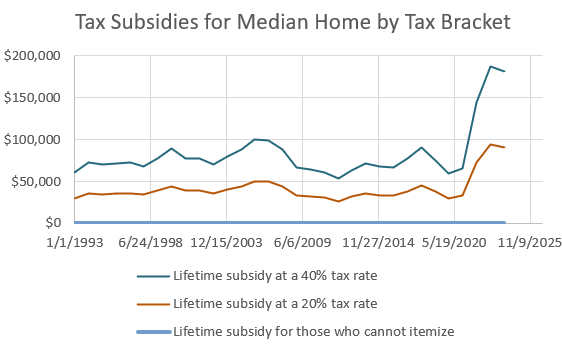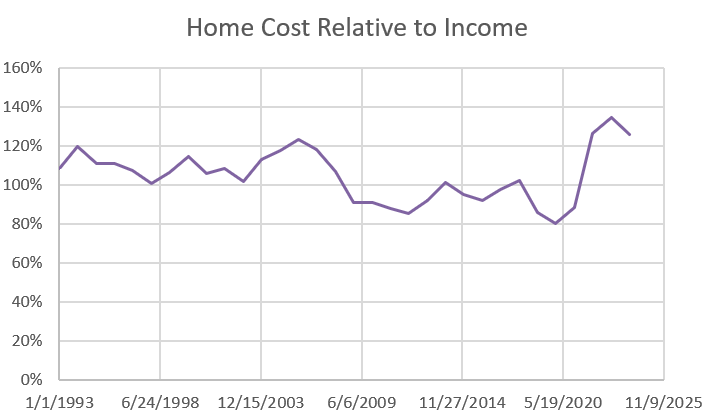Colin Read • January 13, 2023
Things Looking Up, Recession to Follow - January 15, 2023

Greetings from the Galapagos Islands, where there is no talk about inflation, the Federal Reserve, cryptocurrency, and COVID, although there is talk about global warming!
Okay, back to the rest of the world. The data is in. Once again, the inflation rate is low and prices are plummeting.
This has been our narrative for six months now, even though the rate of price increase since one year ago remains above 6%. As we have been saying, this annual inflation rate is misleading since it is so driven first by latent aggregate demand on one hand and a broken supply chain on the other late in 2021, and second by the Invasion of Ukraine and the ensuing energy shortage in early 2022.
Both of these economic shocks were relevant then but have little relevance now. In fact, the economy is now suffering from a different problem - the hangover from the previous shocks. The highest inflation rates for forty years scared the bejeezus out of the economy and prompted the politicized Fed to finally do what most economists thought had been overdue for some time.
The combination of consumer fear and Fed action caused demand to decline as households battened down the hatches and had largely spent all the campaign donations made to most households throughout COVID. Fear of a recession driven by Fed-induced higher interest rates also played into our fears.
Finally, what goes up sometimes comes down. In some cases, such as wages, any temporary increase does not result in a subsequent decrease. You can raise wages, but you can’t really reduce them. But, energy prices go up and down, and so do some food commodities that go along for the energy ride.
The net result is that overall prices can come down, as we are seeing now. Month to month prices dropped by 0.1% in December alone. The combination of reduced prices at times and moderated prices consistently over the last six months reveals an overall and very modest inflation rate that is consistently hovering around the traditional Fed policy goal of 2% annualized inflatlon.
I would normally then predict that weak demand and moderated prices might induce the Fed to take its foot of the monetary policy brake for a while. However, there are two things that will give it pause to do so. One is that it was behind the curve in inflation abatement in the first place, so it is still in catch-up. In fact, a Federal Reserve discount rate of around 4-4.5% now is about where it traditionally is when inflation is around 2%. So, in some sense, we are getting back to normal, even if it is a strange normal. But unemployment is still way too low to prevent upward pressure on wages, so the Fed will remain diligent in raising interest rates, perhaps at a tapered pace.
The second effect that concerns the Fed and many economists is the still-torid rate of government spending. Economists view fiscal spending as an excellent discretionary tool. In bad times accumulated government surpluses can be spent to stimulate the economy and reduce the depths of recessions. Then, in good times, higher tax revenues and lower social services outlays allow federal governments an opportunity to rebuild surpluses.
Unfortunately, over the past decade and a half, government spending has been rising in both good times and in bad. Now, the government is really caught off-foot as higher interest rates are compounding the interest costs on all the excessive borrowing under the late Obama, the Trump, and the Biden presidencies, each of whom had the opportunity to govern with unemployment rates and economic slack at almost unprecedentedly low levels.
This excess spending, combined with the stimulatory effects of reduced taxes under the Trump regime, has resulted in artificially high overall demand, even as households have become concerned about the state of their home economics.
For these reasons, the Fed will likely need to keep their foot on the brake for some time, and are slow to correct our perceptions that inflation remains a problem. Hence, the fiction of 6-8% inflation persists, and the Fed uses it as cover to perform the necessary catchup and prevent a rebound of inflation. This is prudent, even if they are doing the right thing for reasons too late.
Most economists now believe a recession is inevitable. However, even though two consecutive quarters of Gross Domestic Product decline has been the traditonal measure of a recession, the National Bureau of Economic Research charged with making such a determination chose not to do so in 2022 because the labor market continued to be stubbornly hot.
There are signs of labor market and wage growth moderation as recessionary fears set in, so many now believe a recession is imminent. I’d be less convinced of that were it not for the stock market asset bubble that continues to hold a lot of hot air. The housing market has cooled off, but the wealth perception of a strong stock market tends to persist.
In addition, while many believe that the Fed’s actions of late have cooled off the economy, the actual effects take many quarters to come to fruition. Their actions mid 2022 won’t really be felt until the Spring ot 2023 and later. Hence, there are latent forces that could still slow down the economy and induce a recession, beyond merely our increased caution.
I realize that there are a lot of economic balls in the air right now, which is why commentators have been off the mark and focussing on fancy baubles rather than fundamentals. It won’t be long before reality sets in and we become more unified on a shared economic picture. Meanwhile, hold on to your hats and wallets.









